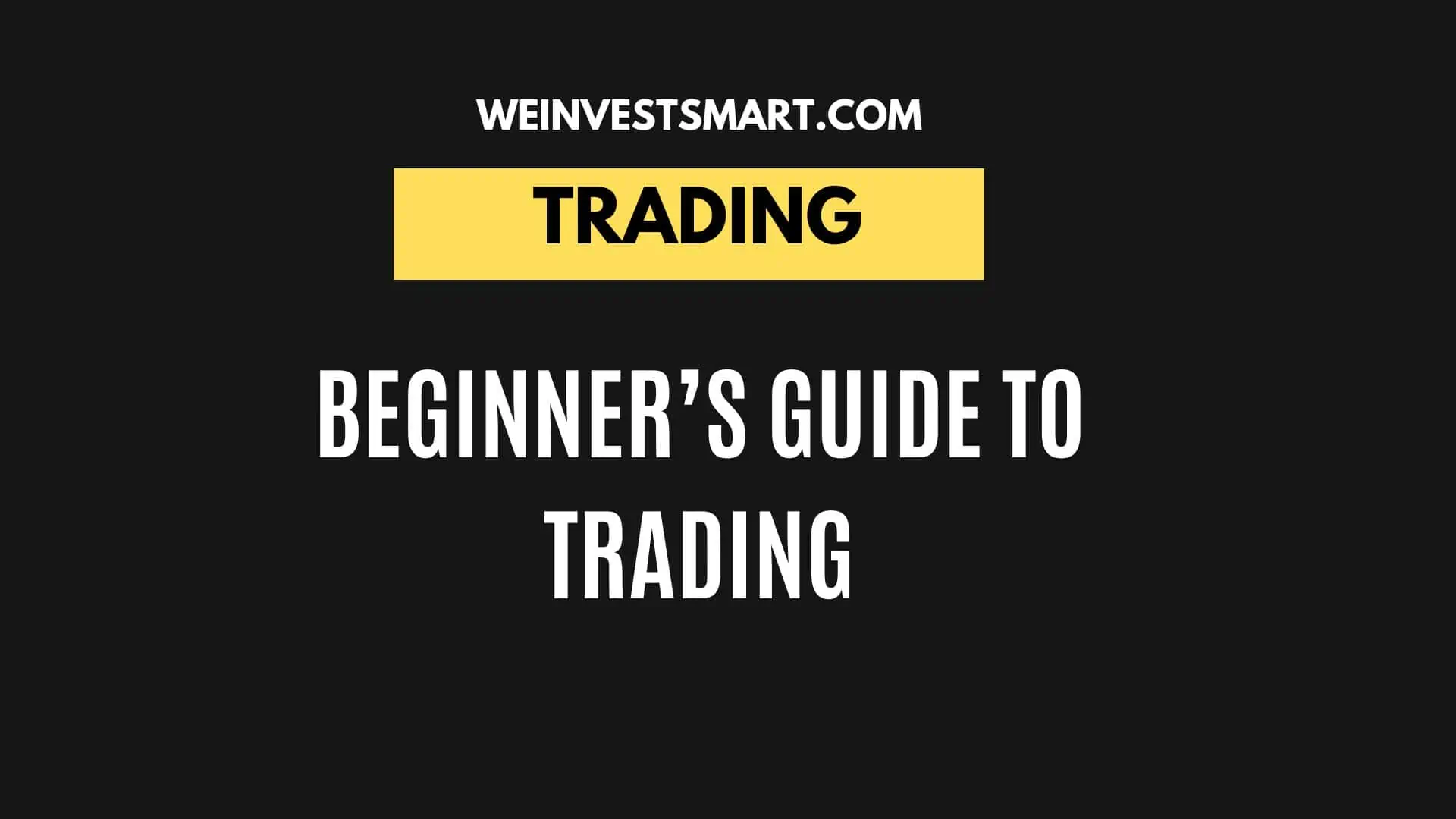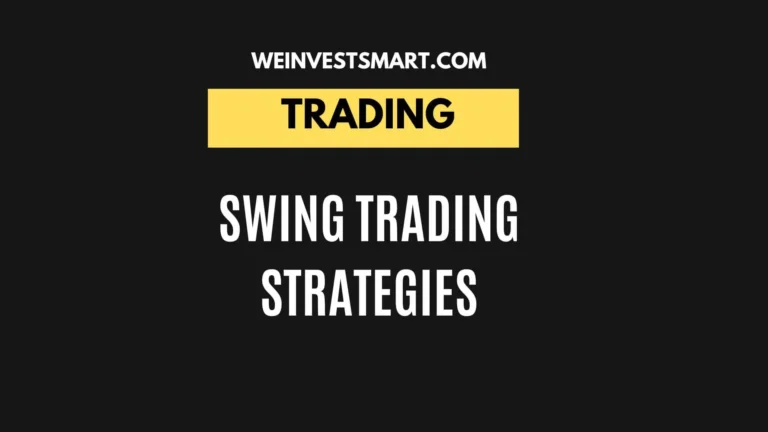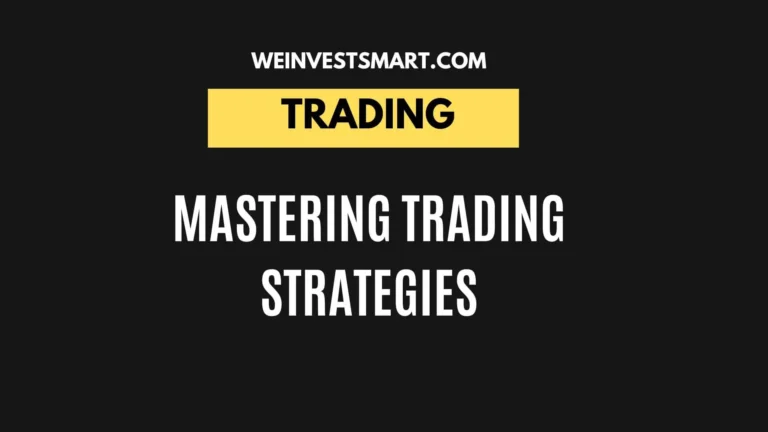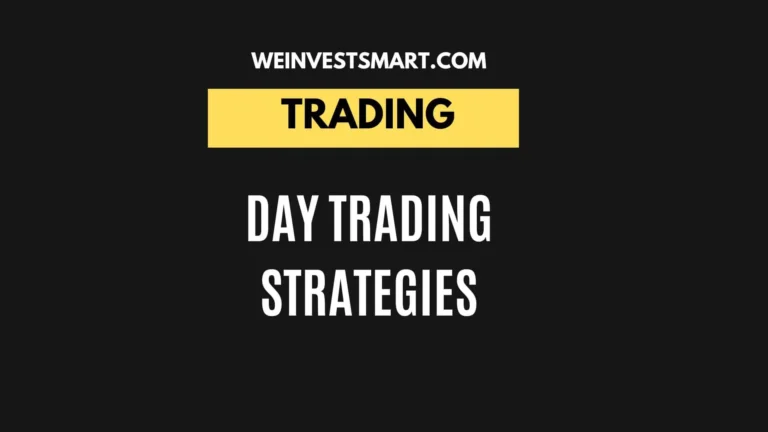What is Trading? A Beginner’s Guide
Trading is a term that conjures images of bustling stock markets, flashing screens, and fortunes made or lost in the blink of an eye. But what exactly is trading, and how does it differ from traditional investing? Let’s demystify what is trading

Trading is the art of buying and selling financial assets within the dynamic world of financial markets. Unlike long-term investing, which focuses on gradual wealth accumulation, trading zeroes in on short-term opportunities. Picture this: traders are like nimble surfers riding the waves of market fluctuations, aiming to catch the perfect wave for quick profits.
So, what can you trade? The possibilities are vast:
- Shares: Owning a slice of a company.
- Commodities: Think gold, oil, or agricultural products.
- Derivative Contracts: Futures and options tied to stocks, indices, and commodities.
- Analytical Approaches: Traders use either technical analysis (charts, indicators) or fundamental analysis (company financials, economic reports) to make informed decisions.
But who should trade? And who should stick to investing? Well, the democratization of financial markets means that anyone with internet access and a bank account can participate. Trading can be exhilarating, but it’s also risky—especially for those unaccustomed to market volatility.
On the flip side, investing takes a long-term view, relying on historical market growth.
Consider reading: Top 10 Best Trading Apps in India
Page Contents
What is the meaning of trading?
When I jump into the concept of trading, I’m exploring the heartbeat of the financial world. In its essence, trading involves the buying and selling of assets like stocks, bonds, commodities, and currencies. The primary goal? To make a profit. Whether we’re discussing trading for beginners or seasoned investors, the core motive remains consistent: buy low, sell high.
The activity takes place across various platforms, from bustling stock exchanges to over-the-counter (OTC) trades, making it accessible to a wide range of participants. Here’s a breakdown of the essentials:
- Stock Trading: involves buying and selling shares of companies to capitalize on stock price movements.
- Commodity Trading: centers on trading physical goods like gold, oil, or agricultural products.
- Currency Trading (Forex): This entails swapping currencies, benefiting from fluctuations in exchange rates.
The digital age has ushered in a new era where trading online has become the norm. All you need to start is a Demat account linked to a trading account, and you’re set to trade assets through various online platforms. These platforms are managed by brokers who help buy and sell orders, earning a commission for their services.
Also, trading isn’t confined to domestic markets. Foreign trading stretches across international borders, adding a layer of complexity due to varying currency values. This involves import and export trades, where assets are either bought from or sold to foreign markets, respectively. It’s a critical component of global economic activity, often contributing significantly to a country’s GDP.
Understanding the trading meaning opens doors to vast opportunities, aiding both trading for beginners and experts in making informed decisions. By keeping these points in mind, I’m better equipped to navigate the complexities of the trading world, aiming for strategic investments that promise substantial returns.
Consider reading: Investing Guide for Stock Investing
Trading vs Investing
When diving into the financial world, trading for beginners may seem complex, but understanding the distinction between trading and investing is crucial. Let’s break it down.
Period
- Trading: Stocks are held for a short period—sometimes just a day or a week.
- Investing: This is a long-term approach, where stocks are held for years.
This fundamental difference highlights that while trading seeks to capitalize on short-term market fluctuations, investing is about the gradual accumulation of wealth.
Capital Growth
In trading, I’m always on the lookout for quick price movements. If there’s an uptick, it’s time to sell and book profits. In contrast, investing is more about patience. It’s about seeing capital grow through the power of compounding interest over years.
Risk
It’s crucial to acknowledge that both avenues carry their own sets of risks. But, trading is often seen as riskier due to the possibility of sudden price changes. Investing, on the other hand, tends to involve lower risk as it’s based on long-term trends and compounding.
Index Funds
For those exploring what is trading and looking for a safer bet, index funds can be appealing. They represent a collection of stocks across various sectors, offering a diversification that can mitigate risk. The performance of an index fund mirrors the collective movement of its component stocks, providing a broad exposure to the market.
Summarizing, trading and investing cater to different financial goals and risk appetites. Whether you’re just starting out or you’re looking to refine your strategies, understanding these differences is key to exploring the markets successfully.
Consider reading: Investing vs Trading: Which is Better?
What assets and markets can you trade?
When I first dove into the concept of trading, it became clear that the opportunities are vast and varied. For those curious about what is trading and its scope, it’s essential to understand the diverse assets and markets available for trading. This knowledge can significantly impact your trading strategies and outcomes, especially for beginners looking to make their mark.
Assets for Trading
In my journey, I’ve encountered several types of assets that can be traded, including but not limited to:
- Stocks: Shares of companies that give you a small ownership stake.
- Bonds: Debt investments where you loan money to an entity in exchange for interest payments.
- Commodities: Physical goods like oil, gold, and agricultural products.
- Foreign Exchange (Forex): The trading of currencies from different countries against each other.
- Cryptocurrencies: Digital or virtual currencies that use cryptography for security.
Each asset class comes with its own set of dynamics, risks, and rewards, which makes the trading meaning diverse across different platforms and markets.
Markets to Explore
Trading isn’t confined to one market or region. Here’s a brief overview of where you can trade these assets:
- Stock Markets: Such as the New York Stock Exchange (NYSE) and NASDAQ, offering a platform for buying and selling stocks.
- Bond Markets: Where bonds are traded, often through over-the-counter (OTC) transactions.
- Commodity Markets: Including futures markets where commodities are bought and sold for future delivery.
- Forex Markets: Encompassing all aspects of buying, selling, and exchanging currencies at current or determined prices.
- Cryptocurrency Exchanges: Digital platforms where cryptocurrencies are traded.
Understanding the types of assets and markets available is foundational in grasping the trading meaning and strategizing effectively. The diversity in trading platforms and what can be traded underscores the vast potential for traders at all levels, including trading for beginners. Armed with this knowledge, you’re better positioned to select assets and markets that align with your trading style and goals.
Consider reading: Forex Trading In India: How To Trade, Rules, Regulations, Risks
Types of Trading in Stock Market
When I first dipped my toes into trading, understanding the world was crucial. Let’s jump into the types of trading in the stock market, making it easier for beginners to grasp the trading meaning.
- Intraday Trading: This strategy involves buying and selling stocks within the same trading day. The goal here is to profit from small price movements. It’s a high-paced environment that requires quick decision-making.
- Scalping: Scalping takes the concept of quick trades to an extreme. Traders hold positions for minutes or even seconds, aiming to capture small price changes. It’s intensive and not for the faint-hearted.
- Swing Trading: Swing traders hold onto stocks for several days or weeks, capitalizing on expected upward or downward swings in stock prices. It’s less stressful than day trading and suitable for those who can’t monitor the markets constantly.
- Position Trading: A long-term strategy where traders hold positions for months or years, basing decisions on long-term trends and fundamental analyses. It’s more akin to investing than trading.
- Momentum Trading: This involves buying stocks that are moving upward and selling when they seem to have peaked. It requires constant market analysis to catch trends as they develop.
As a beginner, it’s essential to identify a strategy that not only aligns with your investment goals but also your lifestyle. What is trading if not matching your unique approach to the rhythms of the market? Each style has its risks and rewards, and finding your niche is key to crafting a successful trading journey.
How does trading work?
Understanding what is trading and its mechanisms is crucial for anyone entering the financial markets, especially trading for beginners. Essentially, trading involves buying and selling assets, like stocks, commodities, or currencies, with the primary goal of generating profits. Here’s a breakdown of how trading operates in the modern market.
Firstly, let’s jump into the trading meaning and its core processes. Trading happens in environments known as markets, which can be physical spaces or digital platforms. Markets connect buyers and sellers, allowing them to exchange assets at agreed prices. The price of these assets is determined by supply and demand dynamics, which are influenced by various factors including economic indicators, company performance, and geopolitical events.
- Market Participants: These include individual retail traders, institutional investors, market makers, and brokers. Each plays a distinct role in ensuring liquidity and efficiency in the market.
- Trading Platforms: This is where the magic happens. Platforms can be online brokerages or exchange sites that help the execution of trades. Today, digital platforms dominate, offering quick access to markets around the globe.
- Orders: When you’re ready to trade, you’ll place an order. There are several types of orders, but the most common are market orders (buy/sell at the current price) and limit orders (buy/sell at a specific price).
- Demat and Trading Accounts: To start trading, you need a Demat account to hold your investments digitally and a trading account to execute buy/sell orders. Setting them up is straightforward and crucial for entering the markets.
By understanding these basics, beginners can start exploring the trading world with confidence. It’s important to remember, trading involves risks and it’s essential to research and plan your trades carefully. Whether you’re looking for short-term gains through day trading or long-term growth through position trading, grasping how trading works lays the foundation for achieving your investment objectives.
What is online trading in India?
When I first delved into the world of trading, understanding the concept of online trading in India was crucial. So, let’s break it down. Essentially, online trading is the process of buying and selling financial products through an online trading platform. These platforms are usually provided by internet-based brokers and are accessible to anyone who wishes to try to make money from the market.
In India, online trading began with the introduction of the Bombay Stock Exchange (BSE) online trading system in 1875, making it Asia’s first stock exchange. Today, the BSE, along with the National Stock Exchange (NSE), forms the backbone of the Indian stock market, offering a platform for trading various financial instruments, including stocks, bonds, and derivatives.
- Bombay Stock Exchange (BSE): Established in 1875, it’s Asia’s first stock exchange.
- National Stock Exchange (NSE): Alongside BSE, NSE is a primary platform for stock market trading in India.
- Accessibility: Online trading platforms have made the stock market accessible to the broader public.
- Trading Instruments: You can trade stocks, bonds, derivatives, and more.
Online trading in India has simplified the process of investing in the stock market. Whether it’s trading for beginners or seasoned investors, the importance of understanding what trading is and how it works cannot be overstated. Trading meaning has evolved with the digital age, empowering individuals to participate in the financial markets with just a few clicks.
The process is facilitated by Demat and trading accounts, allowing traders to hold and trade securities electronically. Combined with strategic planning and research, online trading can be a viable avenue for achieving investment goals. But, it’s crucial to approach it with caution due to market volatility and the inherent risks involved.
What are the advantages of trading?
When diving into what is trading, it’s vital to understand both the opportunities and risks it presents. For beginners and seasoned investors alike, appreciating the advantages of trading can set the foundation for a strategic approach to the markets. Here’s a closer look at the compelling benefits of trading.
- Economic Growth Participation: A growing economy usually signifies expanding corporate earnings due to increased job opportunities, higher income, and boosted sales. By investing in stocks, I’m essentially contributing to and benefitting from the business’s growth influenced by the economy’s expansion.
- Simplified Buying and Selling Process: The advent of digital platforms has revolutionized trading for beginners and experienced investors. With just a Demat account, which can be set up in approximately 15 minutes online, I can effortlessly place buy/sell orders, making the process straightforward and accessible.
Here’s a quick rundown of key advantages:
- Flexibility to Start Small: It’s possible to begin trading with modest amounts, which means investing in small-cap or mid-cap companies’ stocks in smaller units is within reach.
- High Liquidity: Stocks are considered liquid assets, allowing them to be converted into cash quickly, a crucial aspect for short-term strategies.
- Potential for Returns: Trading presents the opportunity to make profits through astute buying and selling of assets such as stocks, bonds, and commodities.
- Market Access: Trading opens the door to global markets, providing a platform for diversification and risk management beyond local opportunities.
- Educational: The trading journey offers a learning curve that enhances financial literacy and market understanding.
Clearly, the advantages of trading are manifold, with each aspect offering unique benefits and opportunities for growth. Flexibility, accessibility, and the potential for substantial returns make trading an attractive avenue for investors aiming to capitalize on market dynamics.
What are the disadvantages of trading?
While I’ve discussed the allure that trading holds for many, especially those dabbling in trading for beginners, it’s crucial not to overlook the challenges and drawbacks it embodies. Understanding these pitfalls can help you navigate the trading world more effectively.
Potential Financial Loss
The most glaring concern in trading is the risk of financial loss. Market volatility can swing in unexpected ways, leading to potential losses that can exceed initial investments for the unprepared. This is particularly relevant for beginners who might not yet have the strategies or experience to mitigate these risks.
Trading Costs Can Add Up
Every trade incurs costs, from capital gains taxes to broker commissions. These expenses can quickly accumulate, eating into your overall profit. Here’s a quick breakdown of typical trading costs:
- Capital Gains Taxes: Vary based on holding period and income
- Broker Commissions: Can range widely depending on the platform and type of trade
For those new to trading, it’s essential to factor in these costs when calculating potential profits.
Psychological Stress
The psychological pressure of trading shouldn’t be underestimated. The stress of monitoring fluctuations and making timely decisions can be overwhelming. This is particularly true for day traders or those heavily invested in highly volatile markets.
Market Risks
Markets are influenced by a myriad of factors, from geopolitical events to changes in regulatory landscapes. These elements can abruptly turn the tide, posing substantial risks to traders. For beginners, understanding and anticipating these factors can be a challenging job.
Summarizing, while trading opens up opportunities for growth and learning, it’s imperative to approach it with a balanced understanding of the potential downsides. These include financial risks, accumulating costs, psychological stress, and market unpredictability. Awareness and preparedness are key to exploring the complex yet rewarding area of trading.
Online trading vs. Offline trading
Trading, essentially the buying and selling of financial instruments like stocks, has evolved significantly with the advent of technology. What is trading in the modern era? It’s both a gateway for beginners to enter the financial markets and a domain for seasoned investors to expand their portfolios.
When I investigate trading for beginners, it’s crucial to understand the main avenues: online and offline trading. Each has its benefits and challenges.
Online Trading
Online trading allows investors to buy and sell securities through an internet-based trading platform. This form of trading has become increasingly popular for its:
- Accessibility: You can trade from anywhere, anytime.
- Real-time Information: Live data and news are at your fingertips.
- Lower Costs: Typically, online trading incurs lower fees than offline trading.
But, it requires a good understanding of the trading platform and market knowledge to navigate effectively.
Offline Trading
Offline trading might seem outdated to some, but it offers:
- Personal Touch: Direct interaction with brokers can be invaluable.
- Professional Advice: Brokers can provide insights and advice based on extensive experience.
Yet, it might not be the best fit for those looking for quick execution and real-time data due to its reliance on brokers and more traditional methods of communication.
| Trading Type | Accessibility | Real-Time Information | Cost | Personal Interaction |
|---|---|---|---|---|
| Online | High | Yes | Lower | No |
| Offline | Limited | No | Higher | Yes |
To conclude, the choice between online and offline trading hinges on personal preference, your level of trading expertise, and how much you value immediate information versus hands-on guidance. Whether you’re exploring what is trading meaning for beginners or looking to strategize your next investment move, understanding these forms of trading is pivotal.
Key Takeaways on What is Trading
- Understanding Trading: Trading involves buying and selling assets like stocks, bonds, commodities, and currencies with the goal of making a profit. It’s a fundamental aspect of the financial world that operates on various platforms across global markets.
- Trading vs. Investing: The main difference lies in the duration and goal – trading seeks to capitalize on short-term market fluctuations for quick profits, while investing focuses on long-term growth and wealth accumulation.
- Assets and Markets for Trade: A wide range of assets can be traded, including stocks, bonds, commodities, and cryptocurrencies. Traders can explore various markets like stock exchanges, bond markets, and online platforms to execute their trades.
- Types of Trading Strategies: From day trading and scalping to swing and position trading, each strategy caters to different risk appetites and time commitments. Understanding these can help traders align their actions with their investment goals.
- Advantages and Disadvantages of Trading: Trading offers the potential for high returns and direct participation in the financial markets but comes with risks such as financial loss, trading costs, psychological stress, and market volatility.
- Online vs. Offline Trading: Online trading provides accessibility, real-time information, and generally lower costs, making it attractive for beginners and seasoned investors alike. Offline trading offers a personal touch and professional advice but may incur higher costs and limited access to real-time data.
Final Thoughts on What is Trading
Deciding between online and offline trading boils down to what suits your trading style and needs best. Whether you’re drawn to the cutting-edge efficiency and cost-effectiveness of online trading or you value the personalized advice and human touch of offline trading, it’s essential to weigh these factors carefully. I’ve navigated both landscapes and can attest to the unique advantages each offers.
Remember, the key to successful trading lies not just in choosing the right platform but in understanding the nuances of each approach. As we embrace the future of trading, staying informed and adaptable will undoubtedly be your greatest asset.


